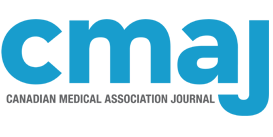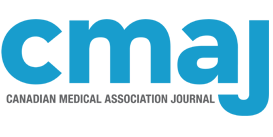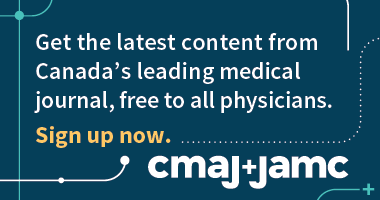Gender inequity persists in medicine and medical academia in Canada, particularly in leadership.
Greater gender equity has been shown to be better for health policy-making and patient care.
Evidence-informed, multipronged approaches that promote gender equity in medicine are required at all levels of medical organizations and for all stages of medical career progression.
The medical profession has an equity problem, particularly in leadership. Several Canadian studies have highlighted the extent of gender inequity in leadership in medicine, and the extent to which opportunities in academic medicine are inequitable by gender. Gender (as defined in Box 1), in combination with race, religion, sexual orientation and cultural origin, elicits discrimination, including in medicine. In the medical profession, inequities in compensation and career advancement, and discriminatory treatment by peers and patients, has been associated with the intersection of race and gender. Historically, however, research in this area has rarely considered intersectionality.
The multidimensionality of gender
According to the World Health Organization, gender is a multifaceted concept that captures “the roles, behaviours, activities, attributes and opportunities that any society considers appropriate for girls and boys, and women and men.”1 Gender is not binary; it is a multidimensional phenomenon. Gender inequity is largely underpinned by socially constructed gender norms, roles and relations. However, most of the medical literature describes gender as being binary (women and men) and as such, most of the research focuses on differences between women and men rather than considering intersectionality.
Gender roles are shaped early in childhood and influence all aspects of human development and perceptions of the world, (e.g., traditional expectations for women to be caring homemakers and men to work outside the home). Traditional gender roles explain why women do more unpaid care than men at home and at work, which affects their work productivity.
Gender norms are common, shared ideas of how people should speak, dress, groom and behave in social, workplace and private settings (e.g., assertiveness being seen as a masculine leadership trait and women being expected to behave submissively, which may lead to discrimination or differential opportunities based on gender).
Gender relations refer to dynamics in relationships between genders that are determined by several factors (e.g., religion, culture or society), which can lead to inequities in power and access or control of resources. These inequities can result in, for instance, men having fewer consequences for uncivil behaviour or for engaging in workplace harassment than other genders.
Gender equity and racial diversity in medicine can promote creative solutions to complex health problems and improve the delivery of high-quality care. We discuss the problem of gender inequity in medicine in Canada, its root causes, the problems inequity raises for the profession and multipronged approaches to promoting equity at all levels of medical organizations, based on best available evidence, as outlined in Box 2.
Evidence used in this article
We searched PubMed and MEDLINE for English-language articles published any time as of August 2020, using the words “solutions,” “gender inequity” and “medicine.” We selected randomized control trials, systematic reviews, meta-analyses and observational studies. We also searched for grey literature using Google and Google Scholar, bibliographies and reference lists of included articles, the Gender in Global Research group project folder established by Elsevier and various Canadian and international websites, including the Association of American Medical Colleges, the Association of Faculties of Medicine of Canada, the Society for Canadian Women in Science and Technology, the American Medical Women’s Association and the Canadian Institutes of Health Research, Institute of Gender and Health.
What is the scale of gender inequity in medical leadership in Canada?
Although women have outnumbered men in Canadian medical schools for a quarter of a century, women are not equally represented in leadership positions2 and are less likely to reach higher ranks than men, even after controlling for age, experience, productivity and specialty.3 In their 2018 report, the Canadian Medical Association (CMA) acknowledged that gender inequity among medical leaders is an important problem.4 Only 8 of the 152 past presidents of the CMA were women. A woman first became dean of a Canadian medical school in 1999, 170 years after the first medical school was established,5 and only 8 women have been deans since then. Yu and colleagues analyzed data from the Association of American Medical Colleges on the faculty of United States medical schools from 1997 to 2008, and showed that when gender intersects with race and ethnicity, the gender leadership gap is even wider. For example, among internal medicine chairs, 12 were Asian men, 10 were Black (9 men, 1 woman), 7 were Hispanic (5 men, 2 women), and 137 were White (116 men, 21 women). It is also worth noting that, among faculty, only 11%, 9%, 11% and 24% of Asian, Black, Hispanic and White women, respectively, were full professors compared with 21%, 18%, 19% and 36% of Asian, Black, Hispanic and White men, respectively.6
Several studies have documented the extent of gender inequity in academic medicine, where success is judged by productivity in grants, presentations, publications and mentored trainees. Gender gaps are apparent in national health research funding competitions at both the scientist level7 and project level.8 If more men in science are getting funding than women after controlling for factors such as age and experience, this further exacerbates disparity and negatively affects a woman’s career trajectory. For example, the more grants a person holds, the more trainees they attract and the more successful and productive they are, ultimately leading to career promotion and tenure advancement. Clinical practice guidelines are used extensively to inform practice and are often widely cited, yet female clinicians are underrepresented on guideline panels and are less likely to be senior authors than men.9 Grand rounds are opportunities to model leaders and diversity in medicine; however, a 2018 retrospective study of presenters at medical grand rounds at 5 major academic hospitals in Canada showed that women are underrepresented.10 Women are more likely to work in lower paid and typically undervalued areas of medicine,11,12 obtain reference letters for medical school faculty positions that are less supportive than their male counterparts,13 and experience a decreased likelihood of being addressed by their professional title,14,15 than men. In both academia and in practice, women are paid less than their male counterparts even after adjusting for several factors, such as age, experience and workload;11,12 indeed, estimates suggest that women are paid an average of 30% to 40% less than men through fee-for-service models of payment for family doctors and specialists, respectively.
What contributes to this gender inequity?
The problem of gender inequity in medical leadership is not the result of too few candidates who are not men with the appropriate experience and training to fulfill leadership roles, nor can it be explained by merely suggesting that different genders do not have the same aspirations as men.16 Gender inequity is largely underpinned by socially constructed gender norms, roles and relations, as defined in Box 1. For example, gender roles explain why female clinicians with children spend 100.2 minutes more per day on household activities and child care than their male counterparts.17 This makes it more challenging for female clinicians with children to get ahead. Gender norms explain why more men are given leadership opportunities and have stronger letters of reference than other genders. Furthermore, gender relations explain why men have fewer consequences for uncivil behaviour or for harassment in the workplace compared with other genders. A recent observational study of operating room culture evaluated the prevalence and predictors of exposure to disruptive behaviour in the operating room.18 Disruptive behaviour was described as a range of unacceptable workplace behaviours, including incivility, bullying and harassment. A further definition provided is “interpersonal behaviour (i.e., directed toward others or occurring in the presence of others) that results in a perceived threat to victims and/or witnesses and violates a reasonable person’s standard of respectful behaviour.”18 The study found that clinicians who are women report more exposure to disruptive behaviour and are substantially less confident or empowered to take action to address incivility in their hospital and university settings.18 Gender and sexual harassment may be associated with environments that exhibit gender inequity in pay, opportunity and promotion.19,20 Disruptive behaviour and overt harassment likely endure within our medical institutions because the offenders are often considered invaluable to the organization for their stature, leadership, productivity or reputation,19,20 and are largely not held unaccountable for their actions, which further amplifies gender inequities.
Why do we need gender equity in medicine?
Ensuring gender equity in medicine is an issue of justice and rights. Having more physicians who are women and more women in health policy leadership also appears to enhance the provision of high-quality patient care. Large, well-conducted observational studies have shown that patients of female clinicians experience better quality of care for diabetes,21 and significantly lower rates of mortality,22–24 hospital readmissions22 and emergency department visits25 than those treated by male clinicians.22 One study considered that reasons for this may include that women spend more time with their patients, are more patient-centred in their approach and provide more evidence-based care.22 Two recent opinion pieces discuss research showing that female representation on corporate boards, such as hospital boards, results in more socially thoughtful decisions and less corruption.26,27 Without gender equity, we risk extinguishing creative solutions to complex health problems26 and, most importantly, limiting patient access to the best care.20
How can we achieve gender equity in the medical profession?
Although providing people with training in diversity and unconscious bias, as well as clarifying unprofessional behaviour, may seem like attractive solutions to gender inequity,28 such interventions represent a small step toward raising awareness of problems. Moreover, the impact of these interventions is short-lived, and they can be harmful when the blame for inequity is focused inappropriately and no systemic measures are put in place.
There is no quick fix for gender inequity. Multipronged interventions composed of a combination of structural and individual interventions (as summarized in Box 3) are needed to foster lasting and meaningful change.29–38 According to Hui and colleagues,39 implicit gender bias is pervasive across the continuum of medical training and practice. Therefore, solutions must begin with recognition of the systemic nature of the problem. Solutions should also be holistic and supported by professional organizations, including at the national (e.g., the CMA, the Association of Faculties of Medicine of Canada, the Royal College of Physicians and Surgeons of Canada and the College of Family Physicians of Canada), provincial (e.g., provincial and territorial medical associations) and local (e.g., hospital, clinic, practice and university leadership level) levels.
Solutions to gender inequity in academic medicine*
Quantification of gender inequities in funding, publications, promotion and compensation
Communicating gender statistics
Annual reporting on the impact of gender equity efforts (completed and made publicly available to ensure accountability)
Behavioural or systemic change
Recognition of the systemic nature of gender inequity and the need for systemic solutions from organizations
Role modelling equity principles by the leaders of professional institutions (academic and health care)
Enshrining core principles of equity, diversity, inclusion, mutual respect, collegiality and professionalism in all organizational policies
Communication of clear objectives to address inequities, describing how it will be achieved with well-defined plans
Open and transparent procedures and policies to protect whistleblowers
Appropriate and evidence-based remediation for the perpetrator if an underlying cause (e.g., burnout or mental health issues) is identified
Gender-inclusive language in recruitment, hiring, and grants and funding assessments
Use of reverse quotas
Search committees reflecting the diversity of the profession or the broader population, and committee awareness of gender bias in reference letters
Gender bias training and champions of gender equity
Seminar training, with a curriculum based on Systems of Oppression theories, using a formally trained search advocate
Proportional approach for research grants
Career flexibility
Integrated career–life planning, coaching to create a customized plan to meet both career and life goals, and a time-banking system
Flexible policies, including family-friendly, parental and career flexibility policies
Nongendered parental leave schemes
Shortened workdays
Policies prohibiting assigning work or sending emails in the evenings and on the weekend
Increased visibility, recognition and representation
Career development planning
Leadership program
Ensure availability of role models to foster identity compatibility and belonging
Social media campaign
Creating opportunities for development, mentorship and sponsorship
Career advising plan
Curriculum vitae review program
Peer mentoring program
Sponsorship program
Financial support
Financial support for childbearing and caregiver responsibilities
Lottery for research grants
↵* Solutions that combine several of these components are recommended.
Quantifying gender inequities
Obtaining and publicly reporting gender and other intersectional data can increase awareness of inequities, as shown by a 2015 case study of gender equity among medical conference speakers,40 which showed that measurement highlighted the problem and, when combined with public accountability, provided incentive for change and to monitor impact. The work of both measuring and reporting and driving change to support gender equity must be recognized and adequately compensated.
Championing behavioural and systemic change
Drivers of behavioural and systemic change need to be championed from the top down.41 This was evident in a case study of an intervention that evaluated the effect of a top–down structural change within science, technology, engineering, mathematics and medicine faculties at Oregon State University. The intervention was an in-depth seminar designed to foster reflection on systems of oppression and power within university leadership. Findings led to the implementation of action plans and policies that shifted the faculties toward greater equity and justice on objective measures. Furthermore, when senior faculty exhibit behaviours in support of equity, it can lead to a more inclusive and supportive climate in academia. Thus, leaders of professional societies, as well as academic and health care organizations, should model the principles of equity. However, although role models in leadership are necessary, they are not sufficient to achieve equity. The core principles of equity, diversity, inclusion, mutual respect, collegiality and professionalism must be enshrined in all policies, programs and procedures, from undergraduate to postgraduate education, through to clinical practice and professional leadership. Organizations, through their boards and administrative leadership, must communicate clear objectives to address inequities and describe how these objectives are going to be achieved. Organizations must also be held accountable. Furthermore, allies and whistleblowers of all genders who report unprofessional behaviour must be supported and protected by open and transparent procedures that enable them to speak up,18 and perpetrators of unprofessional behaviour must be remediated according to best practice and evidence relevant to the circumstances.
Selection and hiring
Advancing an organizational culture of equity in medicine should ideally begin with enrolment in medical school and continue through all stages of professional advancement. Because implicit gender bias is common and, by definition, largely unrecognized,42,43 gender bias training is necessary for people involved in candidate selection, although without clear measures to effect behaviour change such training may be insufficient. Open and transparent procedures and policies support more equitable hiring of academic and clinician candidates,11 and open search procedures (including job postings) should embed equity requirements. For example, all eligible candidates must be encouraged to apply and active strategies to increase the diversity of applicants should be undertaken. Job postings should use neutral language that does not implicitly favour one gender; online tools devoted to the use of gender inclusive language are available.44 Although specific processes to reduce implicit gender bias such as blinding can result in an increased proportion of applicants who are diverse,45 nongendered language has not been effective in reducing gender bias in the grant application process.46
In addition to receiving bias training, search committees should reflect the diversity of the population to raise the likelihood that diverse applicants will be treated equitably during the selection process. Having a search advocate who has received training sit on recruitment committees can also show commitment toward equity and inclusion, and can assist search committees in their efforts to avoid unconscious and unintentional biases. All committees should require training on equity, diversity and inclusivity to ensure the best candidate gets selected, independent of bias.41,43,47 Committee members should also be aware of gender bias in reference letters (e.g., a focus on relationships versus achievements for female candidates48). Nontraditional capability metrics, such as the impact of the candidate’s work rather than number of publications, should be the focus of the interview, including new expertise in gender equity. Given that the outputs of female candidates may have been affected by time taken to have a family or unpaid labour at home, it is important to consider diverse measures when considering candidates’ productivity and impact. Considering only number of publications, presentations and grants obtained will bias selection toward male candidates. Prioritizing other criteria such as ratings of the candidate by students, patients and peers, can allow for more equitable ranking. The use of reverse quotas49 (e.g., only 50% of the leadership can be men) should be encouraged to promote meritocracy and help neutralize male privilege.50
Supporting women’s careers
Existing support for women to advance their careers is minimal and inadequate. Attracting and retaining talented candidates in academic medicine will require that institutions have policies to ensure career flexibility through a supportive environment that challenges “the ideal worker norm.”51,52 Initiatives that promote team success with benefits that mitigate work–life and work–work conflicts can include integrated career–life planning, coaching to create a customized plan to meet both career and life goals and time-banking systems.53 Time-banking interventions measure unacknowledged work such as teaching, service and clinical activities, and acknowledges them with practical rewards in the form of support services that are meant to benefit career and personal goals by alleviating time pressure and by promoting career success.54 Parental leave and family-friendly policies include income-replacement plans that provide more resources to the family.55–57 Not specific to physicians, evidence suggests that up to 6 months of paid parental leave can increase the participation of women in the labour force and reduce wage inequalities.58 In addition, making parental leave available to both men and women is critical to ensuring equal economic opportunities. Two studies that analyzed California’s paid family leave found that it increased the usual work hours of employed mothers of children aged 1–3 years by 10%–17%. The studies also showed an association of the policy with higher probabilities of work and employment for mothers 9–12 months after childbirth.59,60 In addition, maternal earnings from 1 to 5 years after childbirth increase when paid maternity leave of moderate length is available.61,62 Financial support earmarked for faculty with caregiver responsibilities can result in staff retention and a greater likelihood of promotion.63
Minority groups lack role models and mentors who are women in academic medicine. To increase the visibility of diverse women in all areas of academic medicine, career advising plans can enhance confidence around professional self-advocacy, achieving a promotion to the next academic rank and expanding training or job opportunities.64 Peer mentoring can contribute to increasing recognition and representation.65–69 Mentors and role models who are women in academic medicine have an important influence on career guidance, career choice, research productivity and personal development.70,71 Because of the shortage of women leaders in academic medicine, there might not always be women available to be mentors. Mentorship alone might also not be enough to support career advancement. Sponsorship, which is the intentional effort by a current leader to advocate for a woman to help her advance her career may be more effective.72 Sponsorship directly targets career advancement and is anchored in the sponsor’s established network and substantial influence on decision-making processes or structures to provide critical professional opportunities for junior faculty. In the present context of a dearth of women leaders who wield that power in academic medicine, men must be evaluated based on how effectively they provide sponsorships for women.73
Organizational approaches, with proposed action plans and publicly reported, measurable effects in promoting good practice in the wider community, are required (Box 4).77,78
The Athena Scientific Women’s Academic Network Charter: an example of a multipronged solution to gender inequity in academia
The Athena Scientific Women’s Academic Network (SWAN) charter encourages and commits universities in the United Kingdom to advance the careers of women in science, technology, engineering, mathematics and medicine.74 As an award-based program, Athena SWAN promotes the progression of women to senior roles by removing obstacles to advancement, ensuring equal pay and mainstreaming support, through action at all levels of the institution. Peer-review panels assess applications, make suggestions on awards and provide applicants with constructive feedback. Categories of interventions include the following: self-assessment and monitoring; key career transition points; permanent and long-term contracts, including job security for academic-related and research staff; career development; promotion of flexible working, including management of career breaks; improvements in organization and culture with respect to gender equity; and a combination of complex, context-specific action planning and system-level organization.
Athena SWAN is widely used throughout the UK as a tool to address gender challenges in institutions for higher education. Women in the highest award category are more likely to be satisfied with performance and development reviews, to be familiar with criteria and processes for promotion, to have been encouraged to apply for promotion, to believe that there are flexible working practices, to be more optimistic about career prospects and to have a mentoring scheme available to them.74 Some evidence linked the charter to higher levels of engagement by women.74 White, middle-class women are the main beneficiaries of Athena SWAN. Athena SWAN and similar initiatives need to incorporate intersectionality and the effects of the overlap of race and other social identities (including gender) for women in science, technology, engineering, mathematics and medicine. Other countries have implemented similar programs, contextualized to their own setting, such as Science in Australia Gender Equity (SAGE) in Australia75 and the Dimensions Charter in Canada.76
Conclusion
Gender equity in medicine will occur when the culture shifts across the entire system.79 If gender equity is truly valued, robust research into the drivers of, and potential solutions to, gender inequity will be necessary for effective change. Some of the authors are currently working with colleagues from 7 countries to evaluate the efficacy of different types of gender equity interventions, supported by funding from the Canadian Institutes of Health Research.80 However, many evidence-based solutions can be adopted now, and there is no excuse for not working to change the climate and environment of the medical profession so that it is welcoming of diversity. The medical profession should be professional, be collegial, show mutual respect, and facilitate the full potential and contribution of all genders, races, ethnicities, religions and nationalities for the benefit of patient care. Equity will only be realized when everyone — regardless of gender and other differences — experiences equity in pay, promotions and other opportunities. There is no better time than now to implement policies to advocate for and support equity in medicine.
Acknowledgement
The authors would like to thank Shazia Siddiqui for helping format the paper.
Footnotes
CMAJ Podcasts: www.cmaj.ca/lookup/doi/10.1503/cmaj.200951/tab-related-content
This article was solicited and has been peer reviewed.
Competing interests: None declared.
Contributors: Andrea Tricco wrote the first draft of the manuscript. All of the authors revised it critically for important intellectual content, gave final approval of the version to be published and agreed to be accountable for all aspects of the work.
Funding: Andrea Tricco is funded by a Tier 2 Canada Research Chair in Knowledge Synthesis. Ivy Bourgeault is funded from the University of Ottawa through the Research Chair in Gender, Diversity and the Professions and from Status of Women Canada, ON 16255, Empowering Women Leaders in Health. Eva Grunfeld is funded by a physician scientist award from the Ontario Institute for Cancer research and by the Giblon Chair in family medicine research. Sharon Straus is funded by a Tier 1 Canada Research Chair in Knowledge Translation.
This is an Open Access article distributed in accordance with the terms of the Creative Commons Attribution (CC BY-NC-ND 4.0) licence, which permits use, distribution and reproduction in any medium, provided that the original publication is properly cited, the use is noncommercial (i.e., research or educational use), and no modifications or adaptations are made. See: https://creativecommons.org/licenses/by-nc-nd/4.0/












Podcast